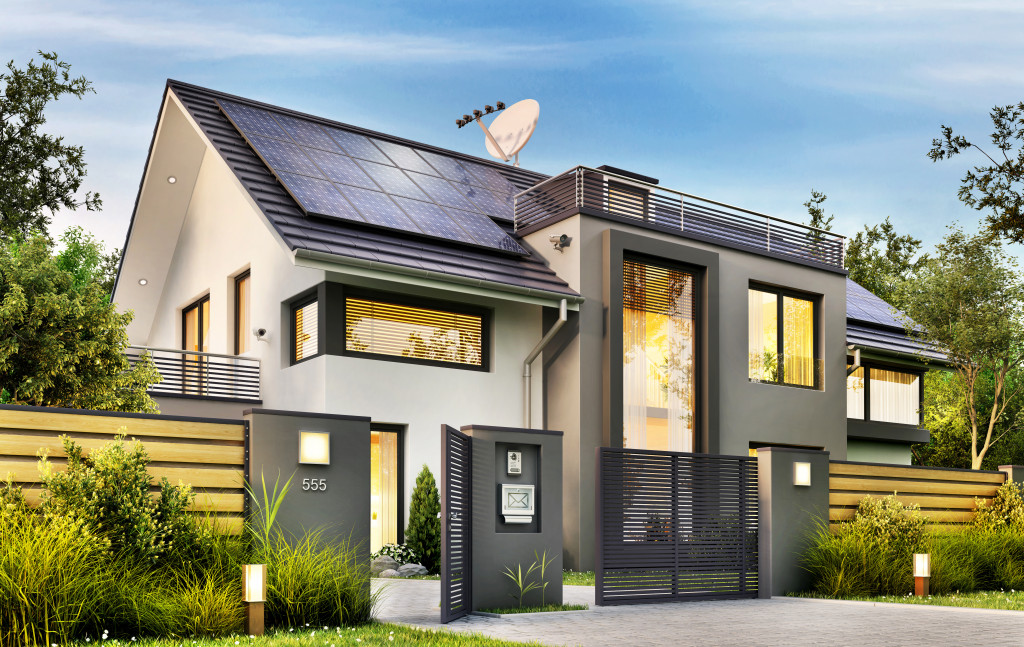The term “sustainable design” is used to describe a type of home that is designed with the environment in mind. The goal of sustainable design is to reduce or eliminate negative environmental impacts, which can be accomplished by limiting or eliminating indoor air pollution, conserving water consumption, installing solar energy systems, and utilizing renewable resources. These ten tips will help you create a sustainable home that will save the environment!
1) Use natural light as much as possible.
Natural light provides warmth and reduces electric use for lighting fixtures. Install skylights or windows on southern facing walls if possible. Consider using large windows with ample glass area instead of smaller windows with less glass area, so more sunlight enters your house each day. Large windows can also provide better views and increase feelings of space.
Of course, remember that too much sun can be bad for you, so if you have an outdoor space, make sure you still have shade. You can have trees in your garden or install roofing for your patio so that you can enjoy the outdoors without feeling too hot.
2) Install energy-efficient lighting fixtures and appliances throughout your home.
This will help consumers save money by reducing electricity use. For example, compact fluorescent light fixtures are available in shapes that fit in standard lamps or can be used as recessed lighting fixtures. In addition, LED lighting is a better choice than CFLs because it lasts longer and consumes less power.
3) Choose non-toxic building materials for your home.
Some paints, carpets, solvents, adhesives, and insulation contain volatile organic compounds (VOCs), which can cause headaches or nausea in some people. These toxic chemicals also contribute to global warming and acid rain and can pollute groundwater and soil.
4) Reduce electricity use by using power strips with a master-off switch.

When not in use, turn off all devices plugged into the power strip, including stereo equipment, computer equipment, lights, fans, etc.—turning everything off when not in use will reduce the amount of electricity used, thus reducing your electric bill.
5) Install a solar energy system.
Solar energy systems provide free heat and hot water while reducing the impact on the environment. These systems can provide up to 100% of a home’s hot water needs without using any natural resources!
6) Caulk and weather seal your home to prevent air leaks.
Air sealing reduces the amount of heat, air, dust, pollen, smells, etc., that come into your house (and vice versa). Properly installed cladding and insulation can be very effective in keeping conditioned indoor air safe from infiltration by outside pollutants.
7) Make sure your home has good ventilation.
Proper ventilation in the summer and winter months can reduce indoor air pollution levels in your house, creating a healthier environment for your family. Natural ventilation involves opening windows to allow fresh air to enter the building when it is cool outside (and thus warm inside).
Some houses even have “cross ventilation,” which means that windows are placed on opposing exterior walls so that air can flow through the house. In the winter, a well-ventilated home will draw hot air away from people and appliances to allow cooler outside air to enter. In this way, waste heat is dispersed throughout the house.
8) Insulate your hot water tank and pipes.
Insulating pipes ensures that more energy from each unit of fuel is transmitted as heat into your home’s living space, rather than being lost through the walls of the water heater or by running down the cold water pipe. If you have a closed system (i.e., a central heating/cooling system), insulate all sections of supply and return ducts with fiberglass insulation.
9) Clean the filters on your furnaces, heat pumps, and air conditioners regularly.
Dust and other particles can build up in the filters over time, which will reduce the efficiency of the heating or cooling system. Filters should be cleaned or replaced at least every three months for best results.
10) Manage waste properly.
Waste management is important for two reasons. First, managing waste properly reduces its negative environmental impacts. Second, it can save you money by giving you an opportunity to harvest free materials that are valuable to someone else.
The best way to handle food waste is by composting or using a biodegradable garbage bag for organic wastes rather than putting everything in the trash. Before recycling your old newspapers, magazines, paper products, corrugated cardboard boxes, beverage cartons, plastic containers, and bottles (in fact, all of your recyclables), be sure they are clean and dry since dampness could make them unusable. Take time every day to find new ways to reduce your carbon footprint!
Conclusion:
In order to design a sustainable home, you need first to consider the different aspects of sustainability. These ten tips will help you build an efficient and environmentally friendly house that is best for your family as well as the environment!


